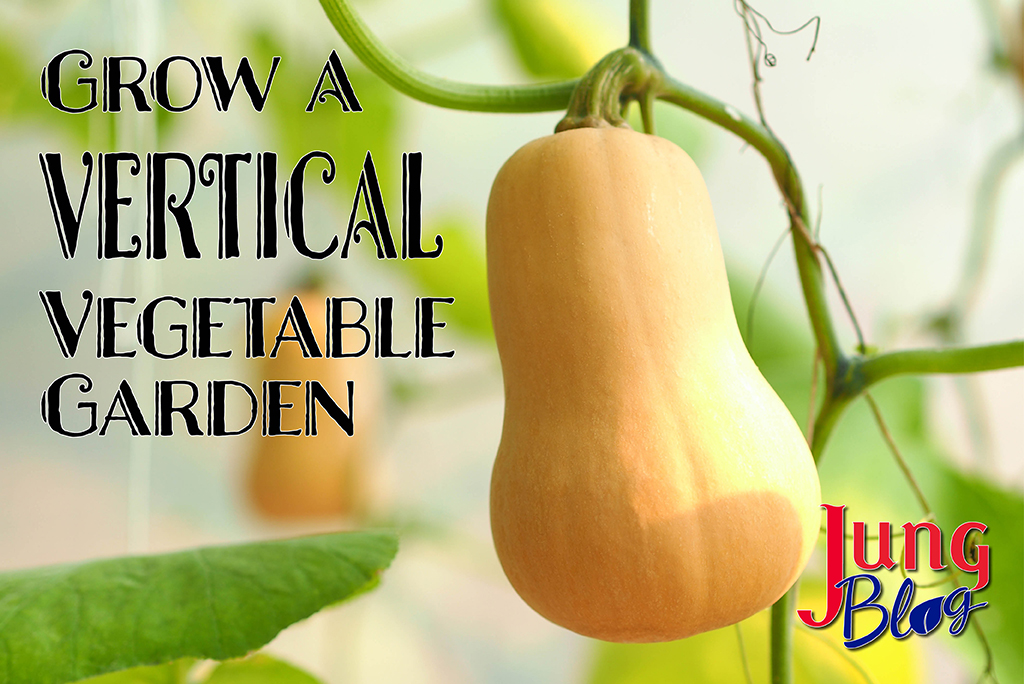
Vegetable gardening is a great way to access healthy food, but many of us have limited space, making it difficult to grow our favorite produce. One way to address this problem is to grow vertically. You can train many veggies to grow upward instead of outward. Vertical growing conserves space and improves plant health, leading to a bountiful harvest. Whether gardening on a balcony or a small yard, growing vertical offers options to increase your yield and be creative.
Benefits of Growing Vertically
Space
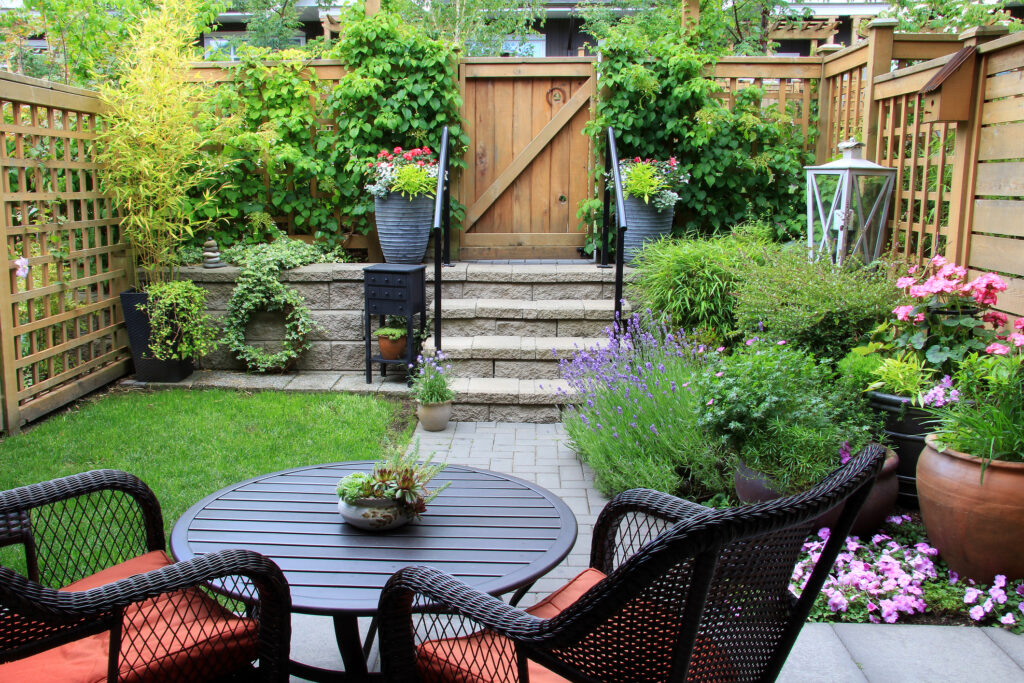
I enjoy growing cucumbers, but they occupy too much space in my small, raised beds. One year I decided to grow them in tomato cages. It took some work to train the plant up the cage, but growing vertical reduced the space needed to grow the plants.
Diseases

Before I grew cucumbers vertically, I often dealt with a disease called powdery mildew. This fungus forms in areas where air circulation is lacking, a common problem when growing plants along the ground. Growing cucumbers vertically gave the plants more air circulation and less powdery mildew.
Watering

Watering your plants become easier because you have easy access to the base of the plant, allowing you to water the plant roots and keep the leaves dry. The quality of the veggies improves because the fruit is cleaner. Harvesting the produce is easier when plants are grown vertically.
Growing vertical allows you to showcase your creativity. Many gardeners use vertical growing to improve the aesthetics of their garden. You can repurpose items like bicycles and wooden pallets to create unique planters. Existing support, like fencing, can support a wide variety of veggies. A few commonly used items for creating support include trellises, wood frames, tomato cages, and arbors.
Vertical Growing in Containers
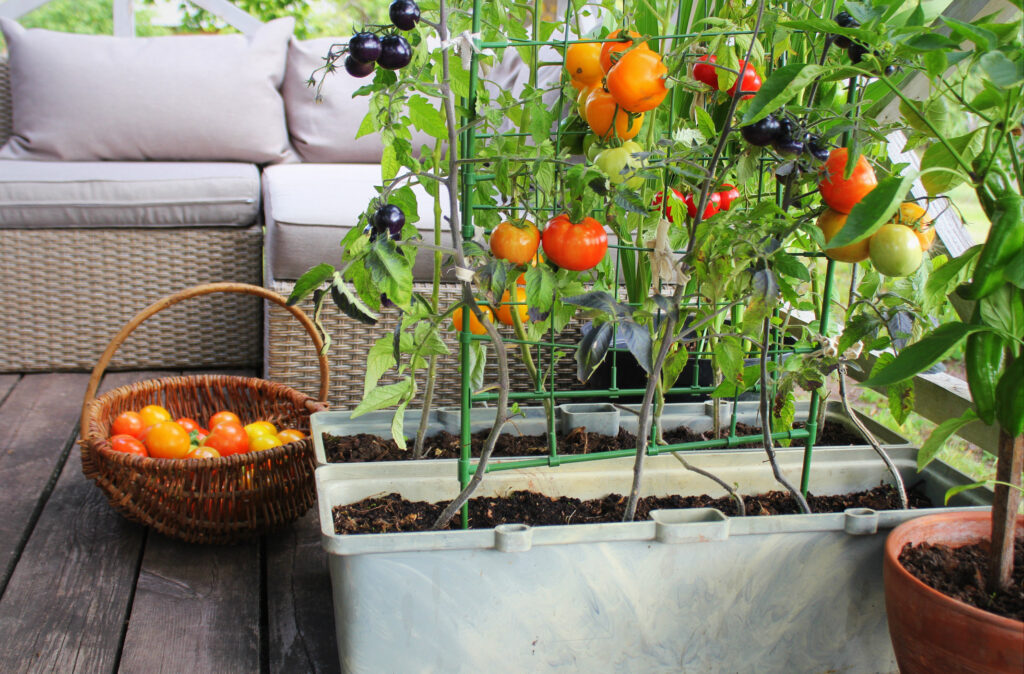
Every year plant breeders create new varieties of vegetables. Some of these varieties are bred for growing in small spaces, creating opportunities to grow veggies on patio and balconies. Gardeners are creating new ways to grow veggies using less space. These two factors give you many options to maximize your harvest. Many vegetables can be grown in containers, but make sure you choose suitable varieties for small spaces. Choosing pots that have adequate space for each plant is also critical. Gardeners are using creative ways to grow veggies in containers. Examples include vertical shelves that hold multiple layers of small veggies, like lettuce and spinach.
My balcony contains window boxes on the outside of the railing, which takes up no space on the balcony. You can use small trellises in containers to keep plants from trailing across the ground. Make sure you arrange the containers to allow adequate sunlight, as most veggies require at least 6 hours of sunlight to thrive. You can also grow herbs in containers, as they complement veggies in pots. There are many unique ways to grow veggies, and I encourage you to look at your own space to find creative ways to increase your harvest.
Veggies to Grow Vertically
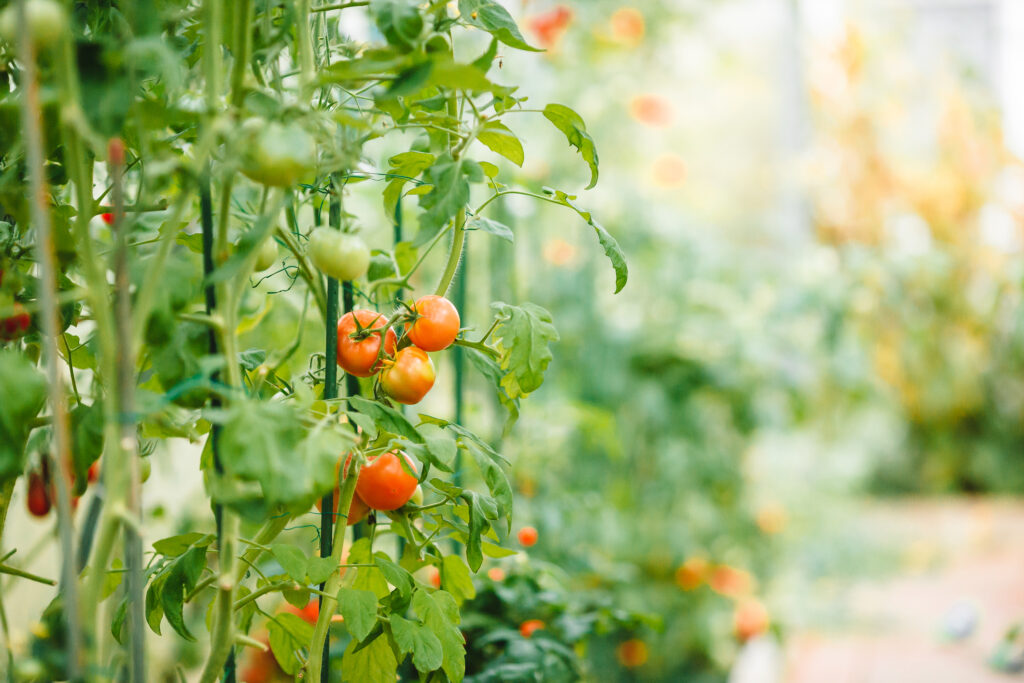
Tomato: This veggie is often grown vertically, as some varieties can grow over 6ft tall. Other tomato varieties are compact, allowing them to be grown with minimal support. You can grow tomatoes in tomato cages or trellises. Tomato plants can become heavy and may need additional support once the plants reach maturity. If you’re using tomato cages, additional support can be provided using stakes to tie down the cages and prevent them from falling. Some gardeners use trellises with more substantial material to keep the plants upright. Training the plants up the support will help keep the plants upright and stable. Smaller tomato varieties can be supported using a single stake. Varieties that are labeled indeterminate will typically grow larger and require more support than determinate varieties.
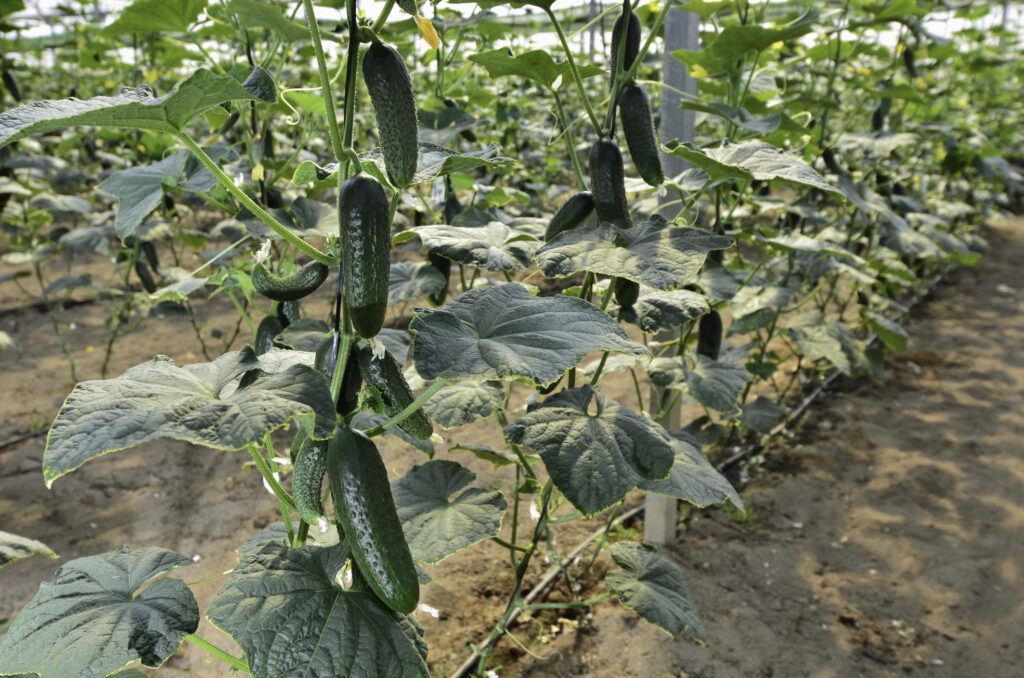
Cucumbers: Cucumbers are an excellent choice for growing vertically. The plants are full of tendrils, threadlike features of a plant that attach themselves to supports. As you grow cucumbers vertically, the tendrils wrap themselves around the cage or trellis, making it easier to train upward. The tendrils may need to be manually wrapped around the support at times. You can use tomato cages to support the plants. Some gardeners use an A-frame trellis, which can support multiple plants using string arranged vertically on a frame. Vertically supporting cucumbers improve the visibility and uniformity of the fruit.

Peas: Pea plants come in a variety of sizes. Some grow tall, while others are short and compact. Each variety requires some support to stay upright. Trellises that use string are often used to support pea plants, but tomato cages can also be used. Like cucumbers, peas have tendrils that help support the plants. The support size depends on the specific variety being grown. Taller varieties may need vertical support up to 6 ft.

Peppers: Most pepper varieties grow under 3 ft tall, but they may require support. Small tomato cages are an easy and effective way to keep them upright. You can also stake the plant.
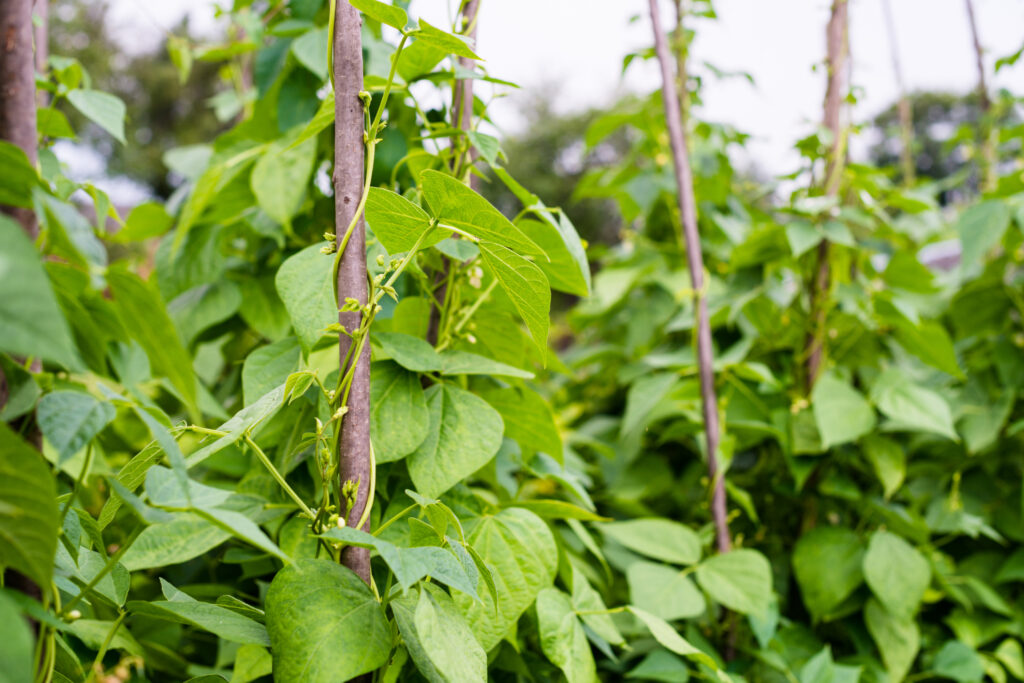
Pole Beans: These can be grown like peas. An A-frame is commonly used to support the plants, but you can also use other forms of trellises. Bush beans are compact and don’t require vertical support.

Watermelon: This veggie takes up lots of space in the garden. You should only select smaller varieties that can fit on the trellis. Wire trellising is often used for watermelons. The fruit may require extra support as it nears maturity. You can provide additional support by creating a sling that holds up the fruit and prevents it from falling off the plant.
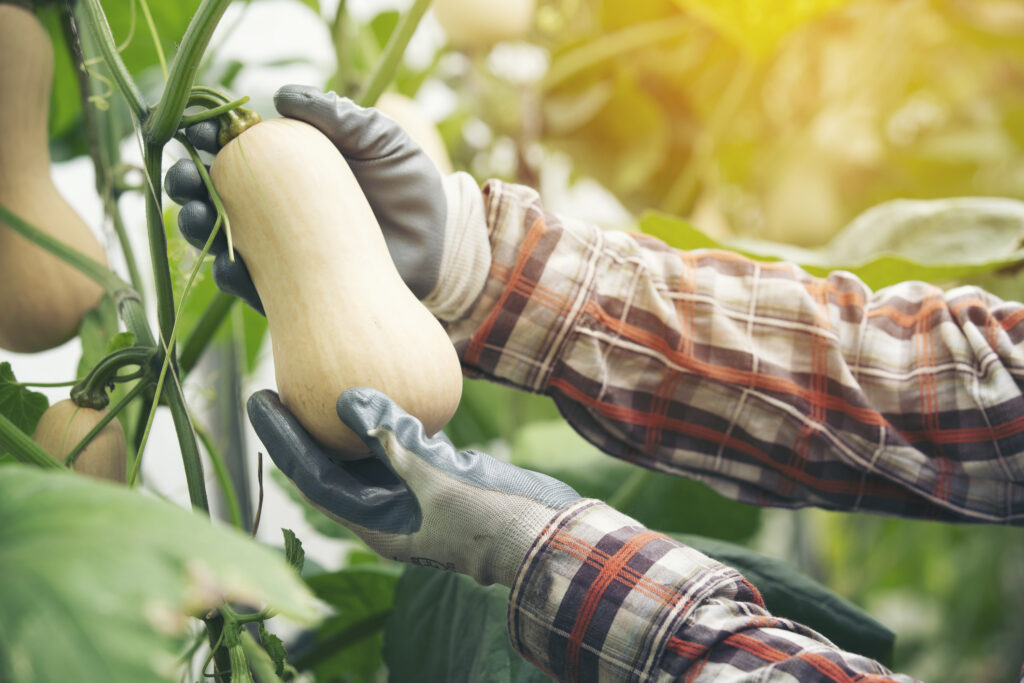
Squash: Squash can be grown vertical but require substantial support to keep the plants upright. You should select smaller varieties to keep the plant from outgrowing the supports. Gardeners frequently use wooden trellises to combat the heavyweight of the fruit and plants.
The creativity of gardeners and the versatility of plants make growing vertically a rewarding experience. Growing vertical gives you more options to produce the veggies you enjoy while promoting healthy food and a healthy environment.
Other Recommended Reading

- Container Gardening For Beginners
- Balcony Gardening
- Growing Citrus in Containers
- Growing Vegetables Indoors From Seed
- 22 Easy To Grow Vegetable Seeds
- 14 Fast Growing Vegetables
At Jung Seed Co, we strive to be your go-to guide for all your gardening needs. Our YouTube channel The Garden Doctor by Dick Zondag is where he provides gardening tips for all levels of gardeners. When you need reliable gardening advice, turn to the trusted experts at Jung.
View our new catalog online or browse our website for your gardening favorites. To receive info on new products, exclusive deals, and specials, be sure to sign up for our weekly email. Join our Facebook page, to discuss all things gardening!
About the Author: Matthew Olson is a professional horticulturist and garden writer. He has a bachelor’s degree in horticulture from UW-River Falls and is a certified professional with the Minnesota Nursery and Landscape Association. His enthusiasm for plants and the outdoors brought him to the green industry. He regularly writes articles about gardening for both gardeners and industry professionals. He can be reached at matt@mattolsonhorticulture.com